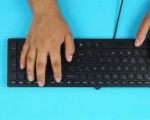What to Do When Windows Does Not Boot from USB: Troubleshooting Tips
- 1. Understanding the Boot Process and USB Booting
- 2. Checking Your USB Drive for Bootability
- 3. Adjusting BIOS Settings for USB Boot
- 4. Troubleshooting Common USB Boot Issues
- 5. Alternative Solutions for Installing Windows
1. Understanding the Boot Process and USB Booting
When Windows fails to boot from USB, it can be frustrating, especially if you're trying to reinstall or recover the operating system. To understand why this happens, it’s important to grasp how the boot process works. When you power on your PC, it goes through a series of steps starting with checking for a bootable device. If Windows is not booting from USB, it might be due to several common factors such as BIOS settings, USB drive issues, or even incorrect boot order.
For a successful boot from USB, the BIOS must be configured correctly to prioritize USB drives over the internal hard drive or SSD. Understanding how this process works will help you diagnose the issue more effectively and fix it quickly.
2. Checking Your USB Drive for Bootability
One of the first things to check when Windows does not boot from USB is whether the USB drive is actually bootable. Sometimes, the issue lies not in the BIOS settings but in the USB drive itself. If you’re unsure whether the drive is bootable, here’s how to check:
- Ensure the USB drive is formatted correctly (usually FAT32 for UEFI systems and NTFS for legacy systems).
- Make sure you have copied the correct boot files onto the USB. Tools like Rufus or the Windows Media Creation Tool are great for creating a bootable USB drive.
- If you're using an older USB 2.0 port, try switching to a USB 3.0 port, as some older ports may not support bootable USB devices properly.
If your USB drive is not bootable, you will need to recreate the bootable USB using one of the mentioned tools.
3. Adjusting BIOS Settings for USB Boot
One of the most common reasons why Windows does not boot from USB is that the BIOS settings are not configured to prioritize booting from a USB drive. To fix this, follow these steps:
- Restart your PC and press the BIOS access key (usually F2, F10, ESC, or DEL, depending on your manufacturer).
- Once in the BIOS, navigate to the "Boot" tab or section.
- Change the boot order so that the USB drive is listed first, above your hard drive or SSD.
- Ensure that the "UEFI" option is selected if you're using a modern UEFI boot system, or switch to "Legacy" if necessary for older systems.
- Save the changes and exit the BIOS settings. Your PC should now boot from the USB drive.
Properly adjusting these settings ensures your PC looks for a bootable USB drive before other devices during startup.
4. Troubleshooting Common USB Boot Issues
If you've checked your USB drive and adjusted the BIOS settings but Windows still does not boot from USB, here are a few common troubleshooting steps to try:
- Disable Secure Boot: Many modern systems have Secure Boot enabled by default, which may block booting from USB. You can disable Secure Boot in the BIOS settings.
- Try a Different USB Port: Use a different USB port, preferably a USB 3.0 port, for better compatibility.
- Check for Corrupt Files: Ensure that the files on the USB drive are not corrupted. If necessary, recreate the bootable USB using a reliable tool.
- Ensure Compatibility: Some older systems might not support booting from USB. In such cases, you may need to use an external DVD drive to install Windows.
By systematically troubleshooting these common issues, you should be able to resolve the problem and boot Windows from USB successfully.
5. Alternative Solutions for Installing Windows
If you continue to encounter issues with booting from USB, there are a few alternative solutions for installing or reinstalling Windows:
- Network Boot: If your computer supports network booting (PXE), you can install Windows over a network connection. This method is often used in enterprise environments.
- DVD or CD Boot: If you have a DVD drive, you can create a bootable Windows installation DVD and use that to install the OS.
- External Hard Drive: You can also create a bootable external hard drive for installing or troubleshooting Windows if your USB drive is not working.
These alternative methods ensure that you can still proceed with installing or recovering Windows even if USB booting isn't an option.
If you're struggling with booting Windows from USB and need a reliable tool or solution, check out Ninja Stik for easy-to-use solutions for creating bootable USB drives and more!





























